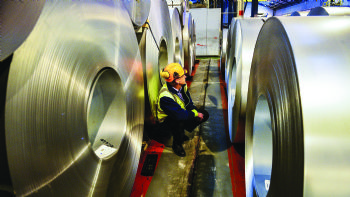
Data provided by the Office for National Statistics (ONS) shows that UK gross domestic product (GDP) contracted by 0.2% in the second quarter (Q2 — April to June 2019).
Commenting on the figures, the ONS’s head of GDP — Rob Kent-Smith — said: “GDP contracted in the second quarter for the first time since 2012 after robust growth in the first quarter.
“Manufacturing output fell back after a strong start to the year, with production brought forward ahead of the UK’s original departure date from the EU.
“The construction sector also weakened after a buoyant beginning to the year, while the often-dominant service sector delivered virtually no growth at all.
“That said, the trade deficit narrowed markedly, as imports fell following a sharp rise in the first quarter.”
The services sector was the only positive contributor to GDP growth in Q2, although growth in services was still subdued at 0.1% — the weakest quarterly growth in this sector since Q2 2016, when services output fell by 0.1%.
Output in the production and construction sectors fell by 1.4% and 1.3% respectively.
Within production, manufacturing fell by 2.3%, following a growth of 1.9% in Q1.
Commenting on the latest UK GDP statistics, Suren Thiru — head of economics at the British Chambers of Commerce (BCC) — said: “The latest figures suggest that the UK economy hit the buffers in the second quarter.
“We’re seeing the unwinding of heightened levels of stockpiling, growing anxiety over the prospect of a no-deal exit and moderating global growth having an increasingly chilling effect on economic activity.
“The marked contraction in manufacturing production is disappointing — but unsurprising, given the current downward pressure on activity in the sector from the running down of excess inventories, weakening automotive production and tougher global trading conditions.
The slowdown in services output in the quarter is a worry, given the sector’s significant share of total UK economic output.
“The decline in business investment is further confirmation that it remains a weak point for the UK economy.
“Anaemic investment limits innovation and productivity, stifling the UK’s growth prospects.
“Unless decisive action is taken, it is increasingly likely that the factors that drove the contraction in the second quarter will continue to weigh on the UK’s growth trajectory over the near term.”